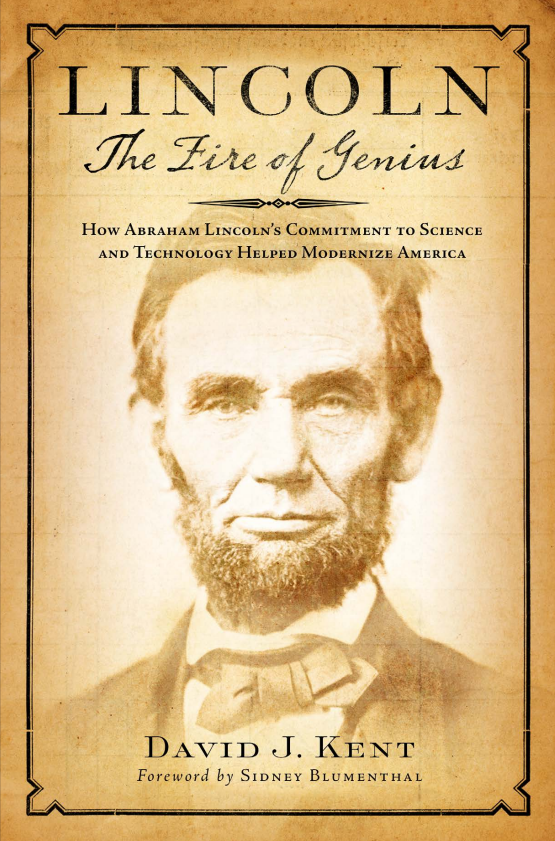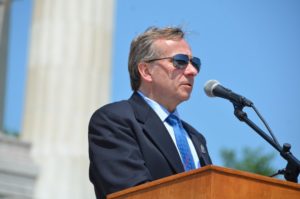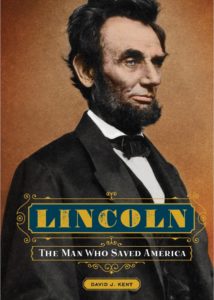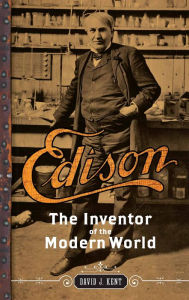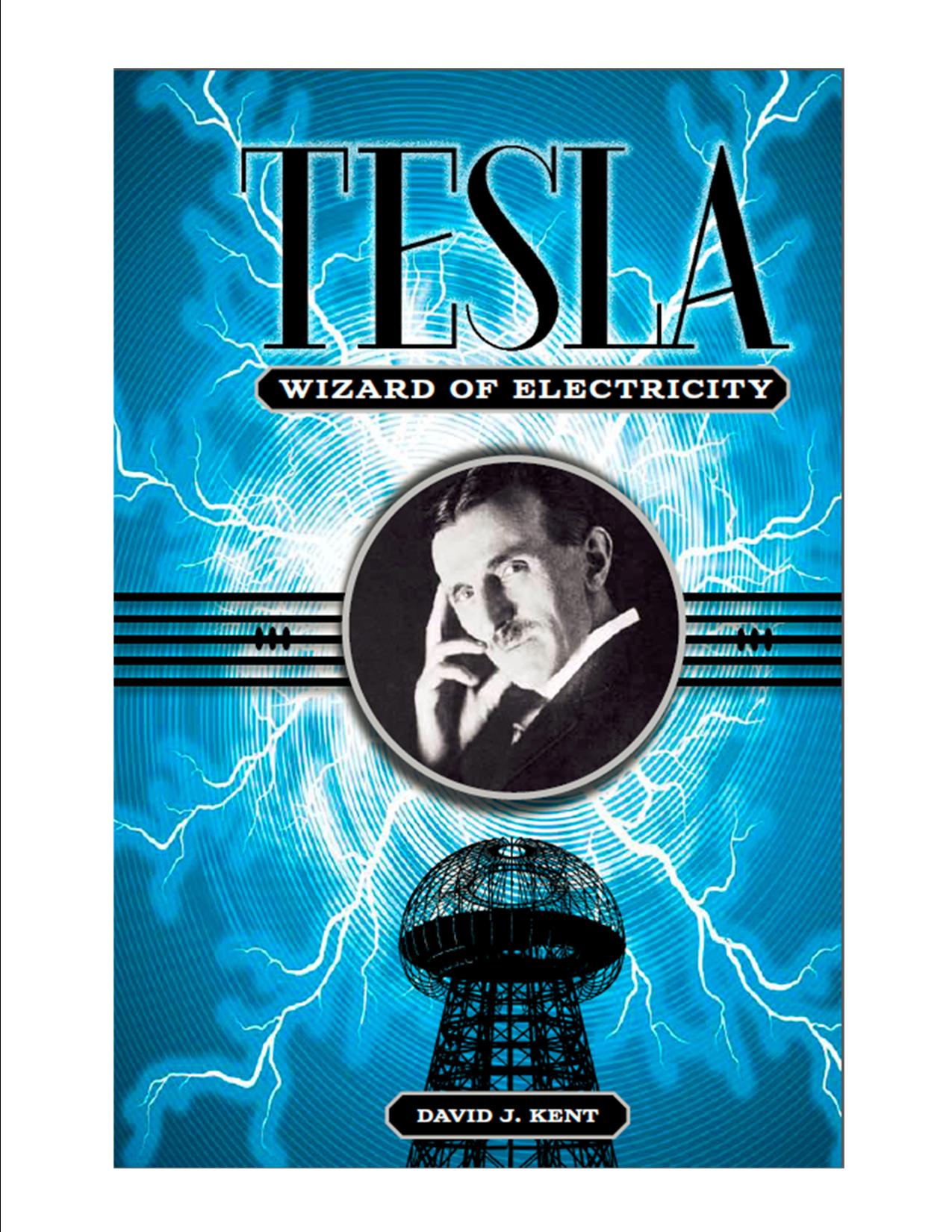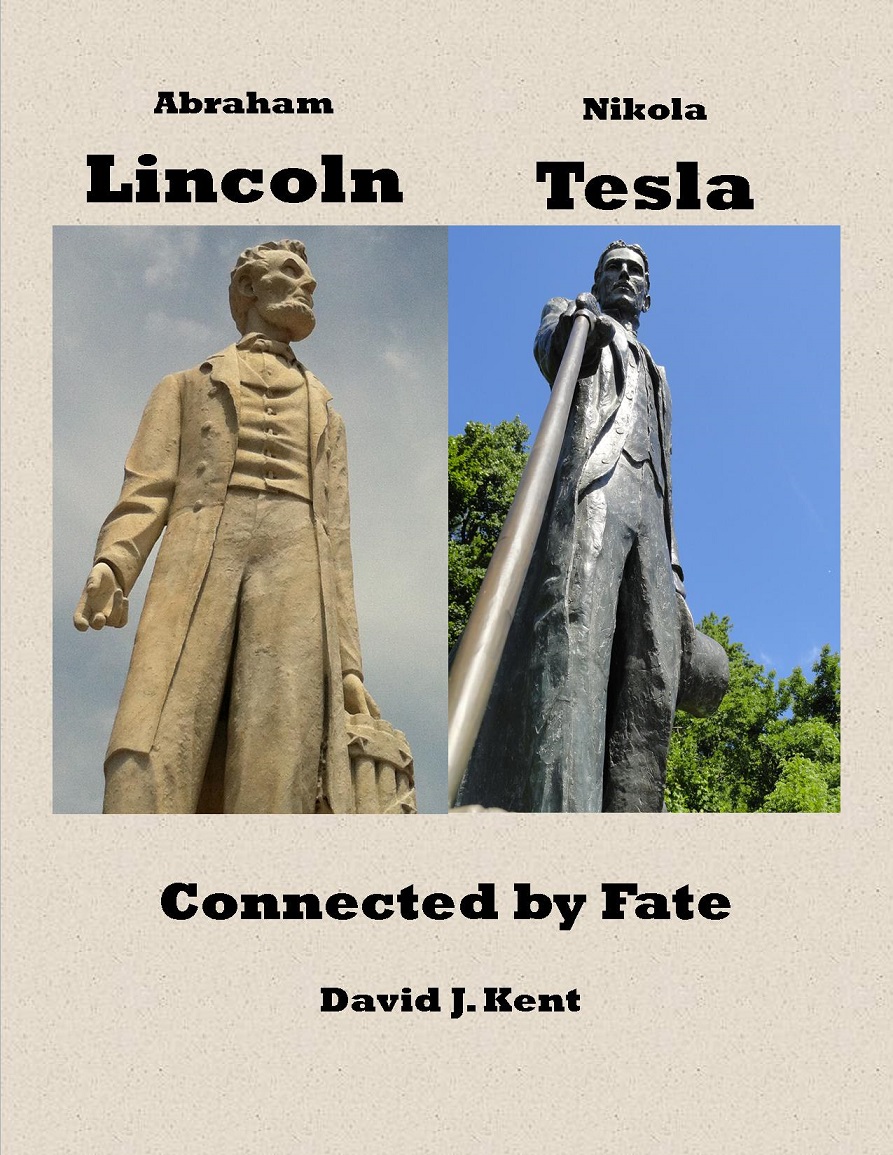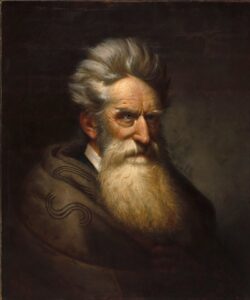 Back in the days when inciting an insurrection against the government was considered disqualifying, on December 2, 1859, abolitionist John Brown was hanged.
Back in the days when inciting an insurrection against the government was considered disqualifying, on December 2, 1859, abolitionist John Brown was hanged.
Brown, of course, was an evangelical Christian of strong religious convictions. He believed he was an “instrument of God,” destined to eradicate the evils of slavery through direct violence. Considered by some a prophet, by others delusional, Brown saw the culmination of his life to bring equality to all Americans. His use of violence to “persuade” went back several years to the Kansas territory, where he and his followers responded to the sacking of Lawrence, Kansas (by pro-slavery mobs bent on murdering free-state settlers) by singling out five pro-slavery men and summarily hacking them to death with broadswords. Escaping punishment for that action, in 1859 he worked to start a slave revolt at Harpers Ferry, Virginia (now West Virginia).
This was not a sudden act of vengeance but a pre-planned attack. Brown had lobbied many eastern abolitionists to support and fund the stockpiling of weapons, persuasively arguing that “a few men in the right, and knowing that they are right, can overturn a mighty king. Fifty men, twenty men, in the Alleghenies would break slavery to pieces in two years.” To the Sharps rifles provided by his backers he added 1,000 pikes specially made for him and intended to be supplied to the combatants. On October 16, 1859, Brown led his armed band to Harpers Ferry, where their objective was to take the armory, the arsenal, the town, and the rifle factory. The expectation was that he would be joined by masses of enslaved men once the attack began. That never happened.
In short, Brown and his men killed four townspeople and one Marine. Most of his men were killed, escaped, or were captured. United States Marines led by First Lieutenant Israel Greene under the overall command of Colonel Robert E. Lee and including First Lieutenant J.E.B. Stuart, quickly subdued Brown. After a quick trial, Brown and others were executed by hanging on December 2.
A few months later, Abraham Lincoln traveled to New York City to give his famous Cooper Union address. In it he tackles the Southern conservative Democrat charge that somehow the new progressive Republican Party was to blame for John Brown’s actions. Lincoln denied it:
You charge that we stir up insurrections among your slaves. We deny it; and what is your proof? Harper’s Ferry! John Brown!! John Brown was no Republican; and you have failed to implicate a single Republican in his Harper’s Ferry enterprise. If any member of our party is guilty in that matter, you know it or you do not know it. If you do know it, you are inexcusable for not designating the man and proving the fact. If you do not know it, you are inexcusable for asserting it, and especially for persisting in the assertion after you have tried and failed to make the proof. You need to be told that persisting in a charge which one does not know to be true, is simply malicious slander.
Some of you admit that no Republican designedly aided or encouraged the Harper’s Ferry affair but still insist that our doctrines and declarations necessarily lead to such results. We do not believe it. We know we hold to no doctrine, and make no declaration, which were not held to and made by “our fathers who framed the Government under which we live.” You never dealt fairly by us in relation to this affair. When it occurred, some important State elections were near at hand, and you were in evident glee with the belief that, by charging the blame upon us, you could get an advantage of us in those elections. The elections came, and your expectations were not quite fulfilled. Every Republican man knew that, as to himself at least, your charge was a slander, and he was not much inclined by it to cast his vote in your favor. Republican doctrines and declarations are accompanied with a continual protest against any interference whatever with your slaves, or with you about your slaves. Surely, this does not encourage them to revolt. True, we do, in common with “our fathers, who framed the Government under which we live,” declare our belief that slavery is wrong; but the slaves do not hear us declare even this. For anything we say or do, the slaves would scarcely know there is a Republican party. I believe they would not, in fact, generally know it but for your misrepresentations of us, in their hearing. In your political contests among yourselves, each faction charges the other with sympathy with Black Republicanism; and then, to give point to the charge, defines Black Republicanism to simply be insurrection, blood and thunder among the slaves.
Lincoln went on to argue that Brown’s use of violence necessarily failed:
John Brown’s effort was peculiar. It was not a slave insurrection. It was an attempt by white men to get up a revolt among slaves, in which the slaves refused to participate. In fact, it was so absurd that the slaves, with all their ignorance, saw plainly enough it could not succeed. That affair, in its philosophy, corresponds with the many attempts, related in history, at the assassination of kings and emperors. An enthusiast broods over the oppression of a people till he fancies himself commissioned by Heaven to liberate them. He ventures the attempt, which ends in little else than his own execution.
Lincoln would go on to become president of the United States and, in the course of secession and a brutal Civil War started by the South to preserve and expand slavery, found himself in a position to issue the Emancipation Proclamation and push through the 13th Amendment forever banning slavery.
Lincoln acknowledges that inciting an insurrection was wrong and that Brown was held accountable for his actions. Perhaps we need to revisit that accountability today.
[Photo of John Brown By Ole Peter Hansen Balling – 6wGTA-pgdPr_9w at Google Cultural Institute maximum zoom level, Public Domain, https://commons.wikimedia.org/w/index.php?curid=21870468]
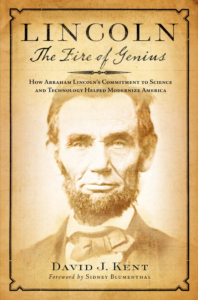
Lincoln: The Fire of Genius: How Abraham Lincoln’s Commitment to Science and Technology Helped Modernize America is available at booksellers nationwide.
Limited signed copies are available via this website. The book also listed on Goodreads, the database where I keep track of my reading. Click on the “Want to Read” button to put it on your reading list. Please leave a review on Goodreads and Amazon if you like the book.
You also follow my author page on Facebook.
David J. Kent is Immediate Past President of the Lincoln Group of DC and the author of Lincoln: The Fire of Genius: How Abraham Lincoln’s Commitment to Science and Technology Helped Modernize America and Lincoln: The Man Who Saved America.
His previous books include Tesla: The Wizard of Electricity andEdison: The Inventor of the Modern World and two specialty e-books: Nikola Tesla: Renewable Energy Ahead of Its Time and Abraham Lincoln and Nikola Tesla: Connected by Fate.



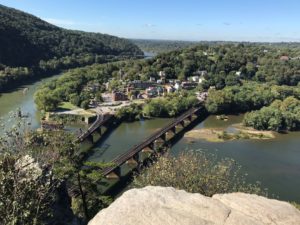 President Lincoln took a special train to Harpers Ferry on October 1, 1862. I drove my car to the National Park Service visitors center on October 1, 2021. Lincoln reviewed the troops on Bolivar Heights. I climbed to the overlook on Maryland Heights. One hundred and fifty-nine years separated us, but I still felt his presence.
President Lincoln took a special train to Harpers Ferry on October 1, 1862. I drove my car to the National Park Service visitors center on October 1, 2021. Lincoln reviewed the troops on Bolivar Heights. I climbed to the overlook on Maryland Heights. One hundred and fifty-nine years separated us, but I still felt his presence.
